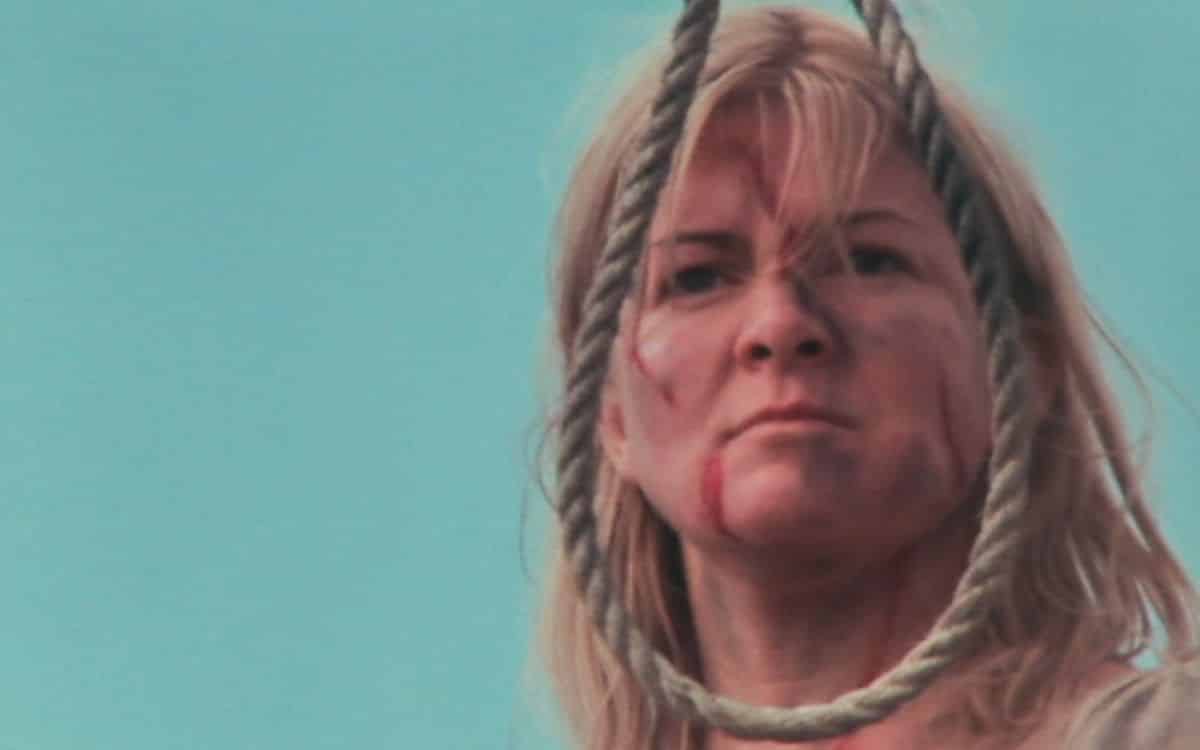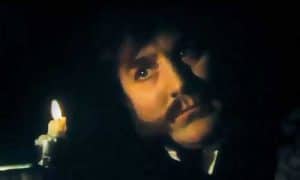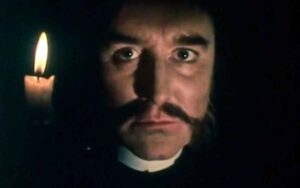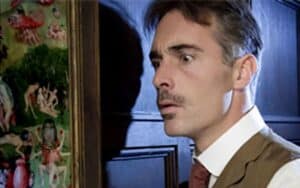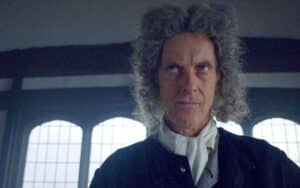The Ash Tree 1975 is a interesting, and decidedly creepy, addition to the A Ghost Story for Christmas series, says RICHARD MARKWORTH
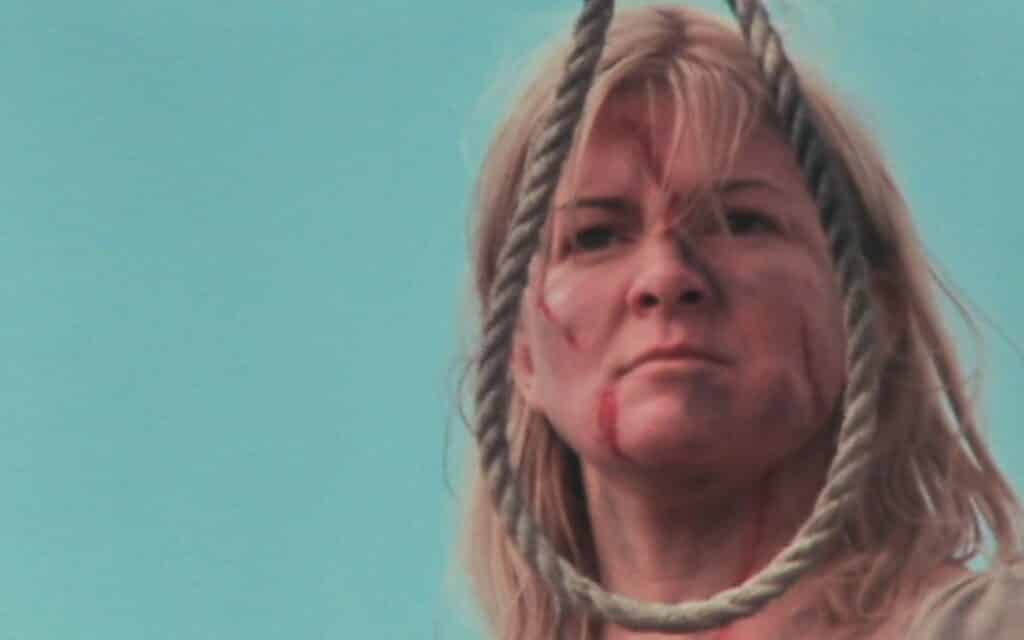
The Ash Tree was 1975’s offering in the BBC’s A Ghost Story for Christmas series, by now as embedded in the Yuletide broadcasting schedule as Morecambe and Wise and The Queen’s speech.
This entry followed the established tradition of drawing from the works of M R James for its source material. However, this would be the final production in the strand’s original run to be derived from the author’s work.
Regular director, Lawrence Gordon Clark, returned to helm the project but The Ash Tree is notable for being the only episode scripted by David Rudkin who had written the startling Penda’s Fen for the prestigious Play for Today series the previous year.
James’ original tale is something of a departure from the classic ghost story, featuring a vengeful witch rather than shadowy spectres waiting to punish the unwary. Rudkin’s version takes this distancing a step further by manoeuvring the story firmly into folk horror territory with its’ themes of pagan fertility and dark powers from the past exerting their influence on the present.
The story concerns Sir Richard Fell (Edward Petherbridge) who returns to his ancestral home of Castringham Hall to claim his inheritance following the death of his childless uncle who, in turn, had inherited the Hall from his equally issue-free uncle, Sir Matthew. Sir Richard is determined to break this unusual cycle of accession by marrying his free-spirited fiancée, Lady Augusta (a pre-Doctor Who Lalla Ward), and producing heirs of his own.
The titular ash tree looms outside the Hall, adjacent to Sir Richard’s bedroom window, a sinister, eldritch presence from whose branches distorted, infantile sounds emanate.
On arrival at Castringham, Sir Richard is greeted by his staff in traditional forelock-tugging manner. When one worker’s daughter refers to him as “the new Sir Matthew” her mother corrects her, pointing out their master’s correct name. This exchange foreshadows strange events that will impact on Sir Richard as his existence becomes intimately entwined with his ancestor’s past.
Sir Richard’s first night at Castringham sees the commencement of a sequence of supernatural events. While writing to Lady Augusta, he is distracted by the vision of a shadowy figure, who addresses him as “Sir Matthew”.
The following morning, whilst exploring his estate, Sir Richard happens across a dead cow. Later, he questions a farmhand as to why the sheep are kept covered at night, only to be informed it is to protect them from “the sickness”.
Undeterred by the apparent blight on his livestock, Sir Richard draws plans to modernise Castringham and informs local clergyman, Dr Croome (Preston Lockwood), he intends to provide a new family pew for the church. Unfortunately, this involves building on unhallowed ground and relocating the only grave thereon, that of one Anne Mothersole, to accommodate the works.
Sir Richard is subjected to further visions in which he finds himself re-living events originally experienced by his ancestor, Sir Matthew. As past and present begin to overlap and the timestreams of the two men converge, we learn Sir Matthew was responsible for Anne Mothersole being sentenced to hang as a witch. As she faces the noose, we witness Anne, on spying Matthew Fell’s pregnant wife, declare “mine shall inherit”.
As his visions intensify, Richard sinks into a malaise, ignoring Augusta’s letters and losing his previous lustre. He sits in the gloom of his bedroom, where Sir Matthew had been found dead in mysterious circumstances years earlier, the ash tree lurking ominously at his window. A reckoning for his great uncle’s actions, to be wrought by Mistress Mothersole’s unholy offspring, birthed amidst the tree’s dark limbs, is imminent.
The Ash Tree is an interesting, and decidedly creepy, addition to the series. Clark again directs skilfully, imbuing the countryside with a forbidding, isolated quality and presents the tree as a malignant presence threatening to invade the confines of the Hall. He cleverly handles the climactic action involving Mothersole’s grotesque “children”, by revealing only glimpses of their hideous appearance to unnerving effect.
Rudkin’s script carries a strong sexual undercurrent. A clear attraction exits between Sir Matthew and Mistress Mothersole despite the ills they visit on one another. Neither is Sir Richard immune, losing interest in his own fiancée as Anne’s story is unveiled.
Petherbridge portrays the dual roles of Richard and Mathew with great competence and his transformation from confident squire to haunted man, sapped of energy by his unnatural circumstances, is brilliantly understated.
Barbara Ewing, exuding an earthy sensuality, is superb as Anne Mothersole, portraying the witch as an ambiguous, rather than intrinsically evil, figure. Although capable of enacting dreadful supernatural revenge, Anne also appears to be a physical representation of fertility itself. It is implied the “sickness” affecting the livestock is a result of her execution, with sterility and death the consequences of crossing her.
Even Richard’s relationship with the liberated Lady Augusta, with whom he originally planned a family, is tainted by his knowledge of Anne’s fate, evidenced by his growing listlessness towards his fiancée. Noticeably, Coombe mentions the witch’s headstone was paid for by the local farmers intimating they associate Anne with the success of their yields and honouring her in their own way.
Whilst not overtly frightening, The Ash Tree’s sense of gathering doom and the shocking appearance of Mothersole’s monstrous progeny are sure to unsettle the late-night viewer. Be certain to close the windows before watching!
Tell us your thoughts on The Ash Tree 1975 in the comments section below!
RICHARD MARKWORTH and Ian J Walls have co-written a new comedy-horror book called Igor and the Twisted Tales of Castlemaine, available from Amazon or the Troubadour website. It follows eponymous lab assistant, Igor, after he leaves Victor Frankenstein and finds himself embroiled in a series of misadventures featuring both classic and all new monsters.

